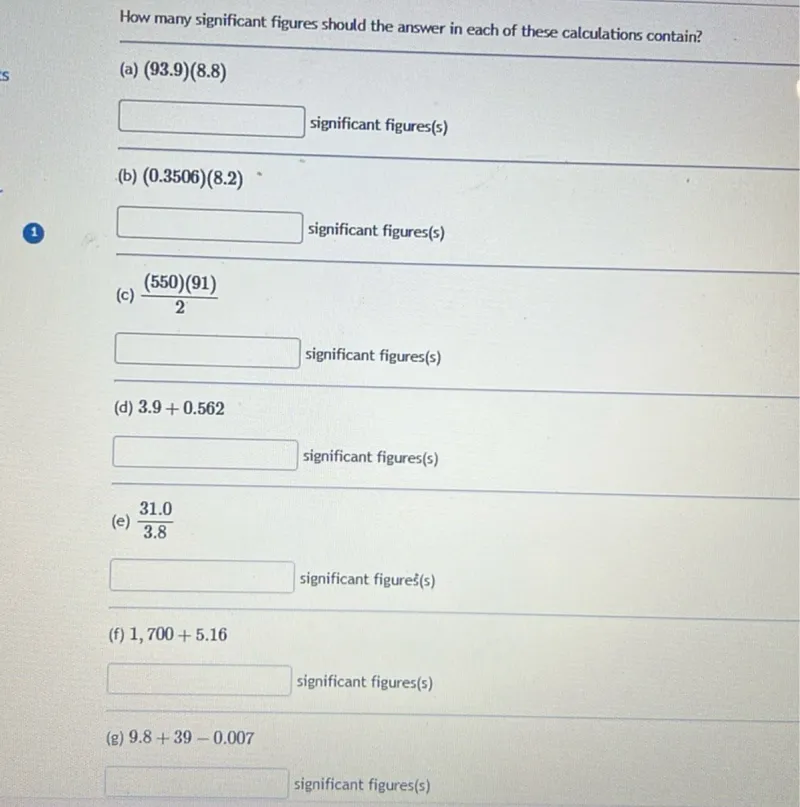Questions: How many significant figures should the answer in each of these calculations contain? (a) (93.9)(8.8) significant figures(s) (b) (0.3506)(8.2) significant figures(s) (c) (550)(91)/2 significant figures(s) (d) 3.9+0.562 significant figures(s) (e) 31.0/3.8 significant figure(s) (f) 1,700+5.16 significant figures(s) (g) 9.8+39-0.007 significant figures(s)

Transcript text: How many significant figures should the answer in each of these calculations contain?
(a) $(93.9)(8.8)$
$\square$ significant figures(s)
(b) $(0.3506)(8.2)$
$\square$ significant figures(s)
(c) $\frac{(550)(91)}{2}$
$\square$ significant figures(s)
(d) $3.9+0.562$
$\square$ significant figures(s)
(e) $\frac{31.0}{3.8}$
$\square$ significant figureś(s)
(f) $1,700+5.16$
$\square$ significant figures(s)
(g) $9.8+39-0.007$
$\square$ significant figures(s)





